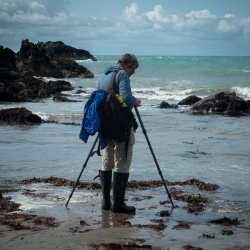Home > Topics > Site and Board Matters > New Article Announcements & Discussions > A Better Histogram, human vision?
A Better Histogram, human vision?
-
AuthorTopic: A Better Histogram, human vision? Read 850 Times
-
New Article Announcements & Discussionson: November 16, 2019 at 8:54 am
It took me a few attempts to finally understand the article and while agreeing with most of it I can’t agree with the assertion that human vision is limited to 6.5 stops of dynamic range. Even without the clever iris opening trick the eye must have a wider dynamic range than that. I realise this doesn’t detract from the thrust of the article. Ken
Re: A Better Histogram, human vision?Reply #1 on: November 16, 2019 at 11:47 pmKen – thanks. The DR of the human eye is a contentious issue – there are some rather ugly threads on DPReview about this. I hesitate to go to far down that rabbit hole. I admit I have a narrow point of view about this.
I believe a lot of the controversy comes from confusion adaptation with sensor DR. I do not include adaptation in DR. If we do include adaptation, the eye can adapt from night vision to brightest daylight over a range of more than 40 stops. I don’t think anybody claims the DR of human vision is 40 stops. There is a wide range of adaptations, some fast (like the iris) and some a lot slower. Where do we draw the line between sensor DR and adaptation? I claim we should do it the say way we do it for our cameras. Adaptation (exposure and ISO) is not considered to be part of DR. Its just the DR of the sensor.
The high resolution fovea of the eye has only a 15 degree field of view. Photoreceptors in the eye saturate at about 100 photons, which is where the 6.5 stops number comes from. Our perception of vision is based on the fusion of many foveal image fragments that occurs in the occipital lobe of the brain. Those image fragments can have different iris and perhaps other fast retinal adaptation. The process of human vision perception is similar to HDR merging and tone mapping. But like HDR merging and tone mapping, those different (iris or otherwise) adaptations on different foveal fragments have the effect of compressing a wide DR (that represented by the input foveal fragments) to a narrower DR that we actually perceive. So much of this boils down to being precise about which DR are we referring to. The total DR represented by all the foveal fragments before fusion, or the DR of the fused image that we perceive.
The problem is that we can’t download images from our occipital lobes. So we can’t easily measure the DR of perceived vision. Still, I claim that DR is only 6-7 stops. The best way to see this is with a stops gradient displayed on a high DR media. However, here I offer two other arguments. First, consider that our best prints can have DRs that fall in the range of ~6 stops (matte paper) to as much as 9 stops. Most high end monitors have a 9 stop DR. If we have the ability to actually see wider DR, then we would find those media to be much less satisfying. Second, as I’ve shown in the article, the gamma levels used in post processing software (histograms and curve adjustments) only cover ~6.5 stops. If the DR of vision perception was larger we see that deficiency in our post processing.
Ok, that’s my defense. Again I recognize that it is based on a narrow concept of DR of human vision, and there are other valid points of view.
JSS
-
AuthorPosts
- You must be logged in to reply to this topic.



